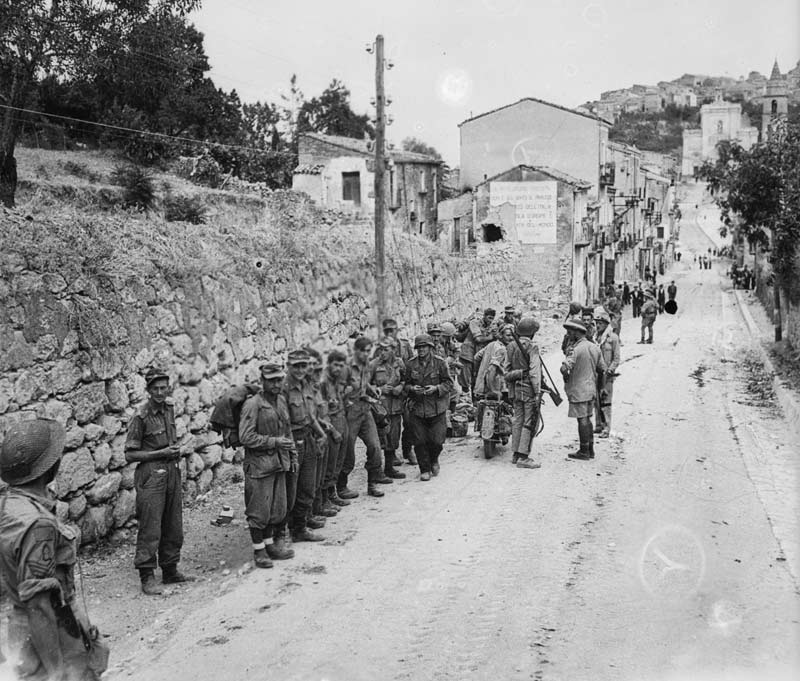
Infantrymen of the Hastings and Prince Edward Regiment advance in a Universal Carrier toward Nissoria, Sicily, in July 1943. [Lieut. Jack H. Smith/DND/LAC/PA-114511]
It started with a “terrific bombardment by our heavy guns,” wrote Captain Basil G. Parker of the Seaforth Highlanders of Canada. “Not much firing seen on shore…. Surprise achieved.”
It would be the Canadians’ bloodiest battle of the Sicilian campaign, costing 438 casualties.
It was only the beginning of the campaign in Italy, the longest for the Canadian army in the Second World War, and it served as a taste of what was to come—house-to-house combat through towns, fighting in sweltering heat on low water rations and routing German troops from heavily entrenched positions, often atop ridges and mountains.
But the Canadians had trained for battles in such terrain. German Field Marshal Albert Kesselring reported they were called Mountain Boys, who again and again scaled cliffs to take out gun emplacements, often in the dark.
In two bloody weeks, the Canadians fought their way to the centre of the island. On July 24, they were ordered to seize Agira. It would be the Canadians’ bloodiest battle of the Sicilian campaign, costing 438 casualties.

Near the entrance to the Sicilian town of Agira, Canadian soldiers guard captured German and Italian fighters waiting for transport to a prison camp in July 1943. [DND/LAC/PA-183272]
An artillery barrage pounded the Germans as Canadians inched forward, supported by Royal Air Force bombers and a Spitfire fighter squadron from the Royal Canadian Air Force.
“Tank battle 200 yards ahead,” Parker noted on July 27. “Many German dead and some of our own along the road. Five Sherman tanks burnt out, also some German tanks and 88mm guns. Shelled most of the day. Lie up. Have cramps and vomiting.”
Early objectives achieved, the Canadians fought on to heavily defended Monte Fronte, where Seaforth Highlanders climbed a 90-metre cliff, surprised the enemy, took the position code-named Grizzly Hill, and fended off a counterattack by Germans brandishing bayonets.
“The protection of the forward line of the Company was a stone wall about two feet high,” wrote Major Henry Bell-Irving. “Lt. Harling stood up his full height and threw grenades at the oncoming enemy…singing at the top of his lungs. He, more than any other, was responsible for the successful holding of Grizzly Hill.”
The parched Canadians were able to slake their thirst after commandos captured a well from the Germans.
Princess Patricia’s Canadian Light Infantry crept toward Agira, following an artillery barrage.

Three members of Princess Patricia’s Canadian Light Infantry take aim near Valguarnera Caropepe, Sicily, on July 20, 1943, as enemy vehicles burn in the background. [Capt. Frank Royal/DND/LAC/PA-163670]
Sicily was liberated Aug. 17. In just 38 days, the Canadians counted 562 deaths among 2,310 casualties.
Ahead lay nearly two more years of arduous advances and brutal battles—and many more bodies.
Advertisement






















